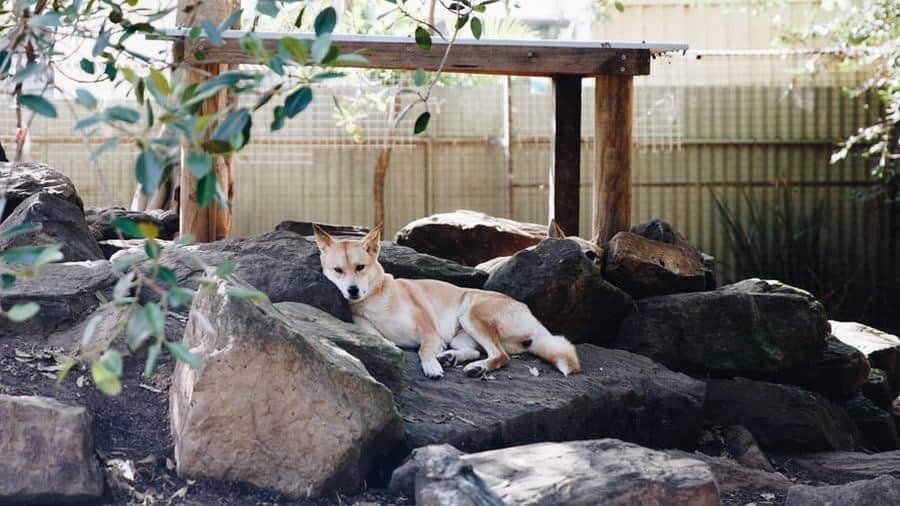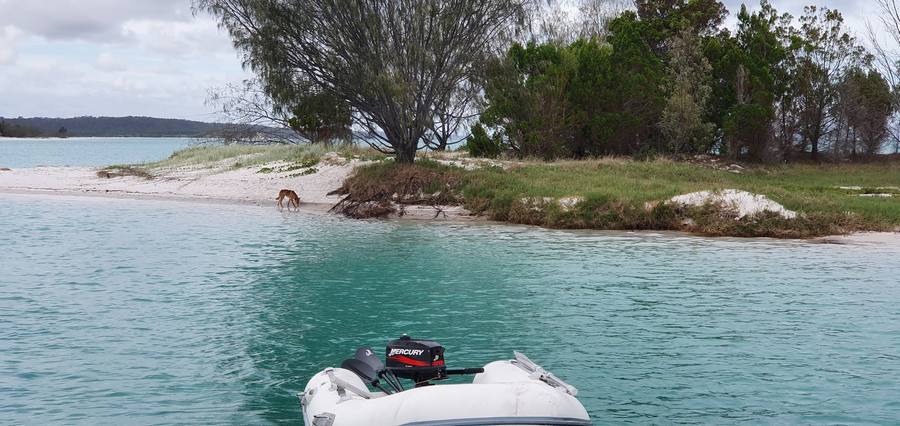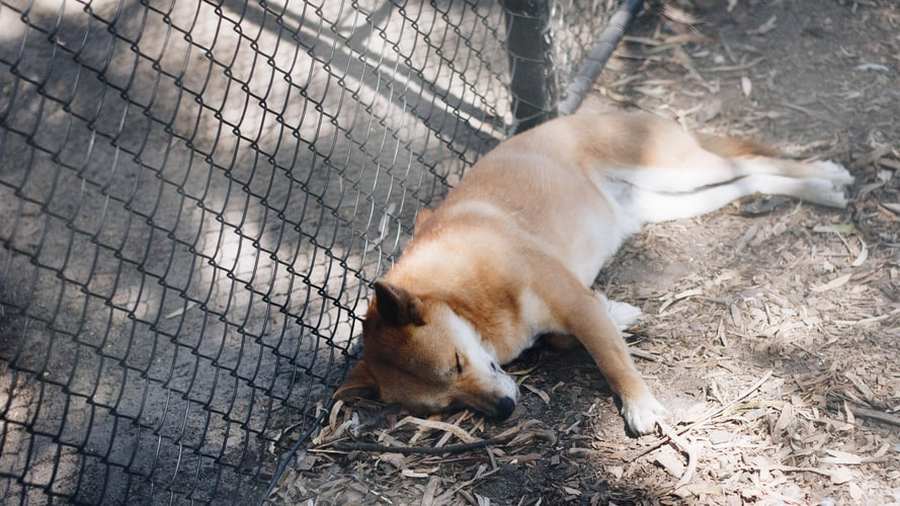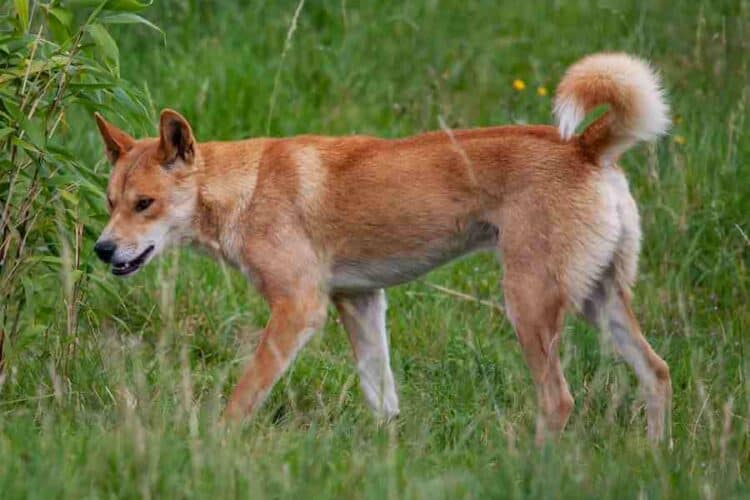Dingoes are one of the most recognizable species in Australia but many conservationists have concerns that the population is at risk due to culling and from interbreeding with domestic dogs. Thankfully, neither of those things are an issue on Fraser Island.
A World Heritage site, purebred dingoes are free to live on Fraser Island with very little interference from humans.
There are close to 200 dingoes left on Fraser Island, the exact number varies. The population rises after breeding and then gets smaller due to natural environmental pressures. The Fraser Island dingoes are all genetically pure and are split into around 25-30 packs, with up to 12 dingoes in each.
Let’s take a closer look at the dingo population on Fraser Island, how it relates to the dingo population in the rest of Australia, and why dingo conservation on Fraser Island is so important.
So we know there are around 200 dingoes left on Fraser Island, but we can never quite be sure of the exact number. This is because conservationists don’t track every single dingo on the island. Instead, they periodically go through a capture-mark-recapture process that gives them a decent estimate of the population size.
The dingo packs on Fraser Island have quite defined territories, with different access to natural resources, and their populations vary naturally. This natural variation is important to maintain for the species to be living as they would have done without human interference.
It is for this reason that the dingoes on Fraser Island are not culled. There is no need to cull them in order to control the population because it self-regulated due to natural environmental pressures, such as food scarcity.
The dingoes on Fraser Island being free-to-roam has caused some tragic incidents
on Fraser Island being free-to-roam has caused some tragic incidents with visiting tourists. For this reason, high-risk dingoes that have the potential to attack humans are euthanized and there have been measures such as fencing put in place to try to keep the dingoes separate from the tourists as much as possible.
with visiting tourists. For this reason, high-risk dingoes that have the potential to attack humans are euthanized and there have been measures such as fencing put in place to try to keep the dingoes separate from the tourists as much as possible.

How Many Purebred Dingoes Are Left?
Dingoes aren’t actually native to Australia. When grey wolves were domesticated in Asia around 4,000 years ago, some were brought over to Australia and set free. These imported dogs were the basis for today’s dingo population.
What this means is that dingoes are actually the same species as ordinary domesticated dogs, but they are an ancient breed (similar to chow-chows or akitas). Because dingoes and pet dogs are the same species, they are perfectly compatible for interbreeding and this is exactly what has been happening for a long time.
In fact, some have argued that there aren’t any purebred dingoes left and that all dingoes should be classed as wild dogs, the same as any stray dog. Geneticists have determined that this isn’t true. There still are purebred dingoes left, although they are relatively small in number.
Almost every wild dingo population on the mainland contains hybrid dogs that have been the result of interbreeding. The percentage of hybrids varies depending on how close the pack is to dense human population, with the highest number of hybrids occurring in the southeast.
Percentage hybrid population per state:
| WA – 41% | NT – 13% |
| SA – 68% | QLD – 80% |
| NSW – 99% | VIC – 99% |
You can see that in some states the percentage of hybrids is very close to 100% , which means that there are essentially no purebred dingoes left in those areas. It is definitely a worrying trend for conservationists who see dingoes as an important part of Australia’s natural fauna.
, which means that there are essentially no purebred dingoes left in those areas. It is definitely a worrying trend for conservationists who see dingoes as an important part of Australia’s natural fauna.
The only area in Australia with a complete population of purebred dingoes is Fraser Island. The dingoes on Fraser Island have no access to other breeds of dogs so they haven’t interbred at all. This makes it even more important that the dingo population on Fraser Island is maintained because it could end up being the only purebred dingo population left.

How Many Dingoes Are Left In Australia?
We can never know the exact number of dingoes that are left, and estimates put the number at between 10,000 and 50,000 dingoes left in Australia. That is a high enough number that we don’t need to worry about dingoes going extinct any time soon. Although there are specific pressures on the species that could cause it to decline.
1. Dingoe Interbreeding Leeds To Intermixed Breeds
As we’ve already mentioned, the biggest pressure on the dingo species is interbreeding. While interbreeding won’t lead to extinction in the sense of dingoes dying out if the breed becomes 100% genetically intermixed we would lose dingoes as a standalone species.
So to all intents and purposes, they would be extinct, as they would only be observable in their genetic lineage and/or some traits that have been passed onto the hybrids.
2. Culling Of Dingoes Protecting Them Against Extinction
At present, dingoes are classed as wild dogs. Wild dogs can be any breed of dogs that are roaming free. This classification has important implications as it means that dingoes, along with other wild dogs, are legally allowed to be culled by farmers.
Of course, farmers need to be able to protect their livestock, but classifying dingoes as an animal that can be culled could have implications for their future population.
Protecting dingoes against extinction isn’t just important as a way of retaining Australia’s natural heritage. It also has important ecological impacts. Dingoes are an integral part of Australian wildlife.
For example, there is some evidence that they can prevent kangaroos from overgrazing in small mammal territories and they could also reduce the number of foxes and reign in their behaviour.

Final Thoughts
The dingo population on Fraser Island isn’t just fascinating to observe, it also has really important conservationist implications. Out of the 10,000-50,000 dingoes in all of Australia, these 200 dingoes on Fraser Island are the only population that is 100% free of hybrids that have resulted from interbreeding with domestic dogs.
As time goes on, and the dingo population in the rest of Australia continues to interbreed, the dingoes on Fraser Island could end up being the only purebred dingoes left.
More Pages On Fraser Island
Avoid The Starlit Trails: Why Not To Drive On Fraser Island At Night
Fraser Island, located off the coast of Queensland, Australia, is a popular tourist destination and a UNESCO World Heritage Site. The island, which spans more than 120 kilometres in length and 24...
Fraser Island, which is a popular tourist destination in Australia. The island has a number of campsites and other facilities where visitors can use toilet facilities. There are on average around 22...


